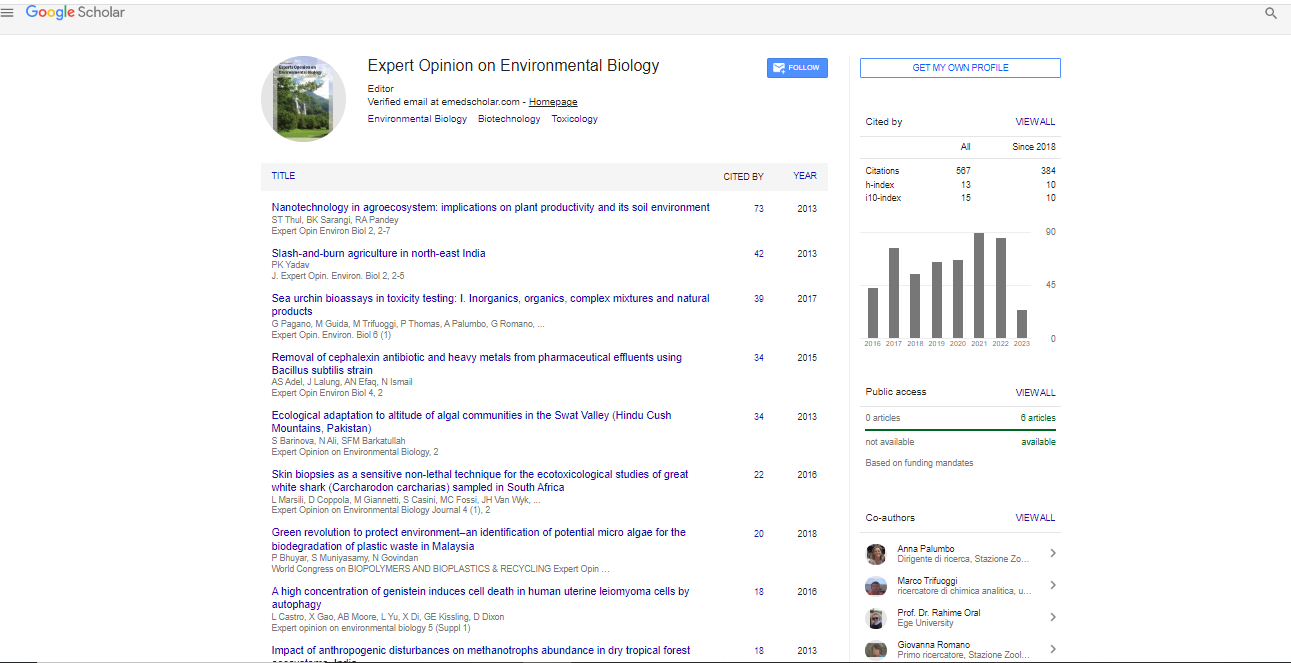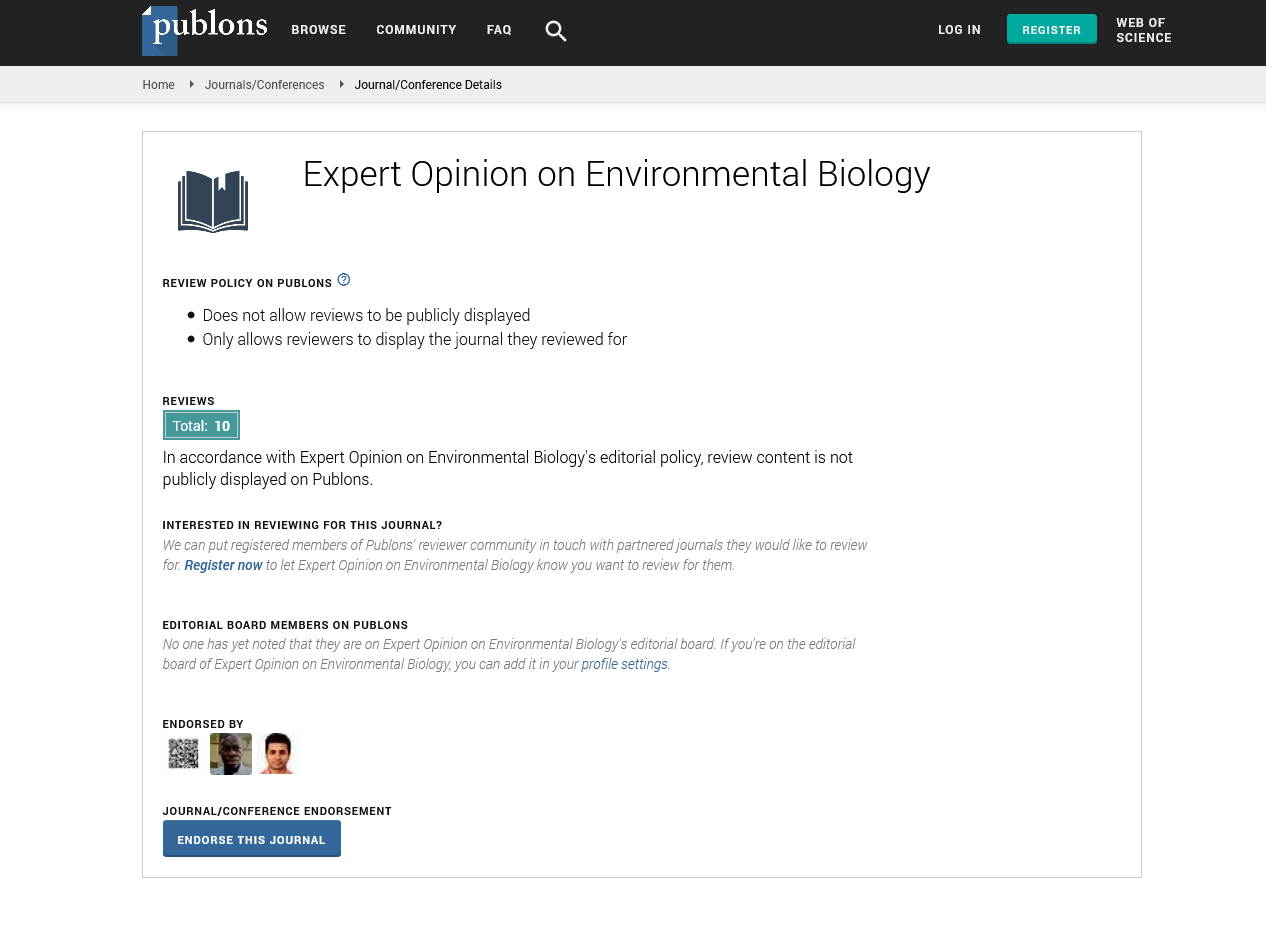An integrated sequential production of bio-ethanol, biodiesel and briquette from spent coffee ground
Lakshmidevi Rajendran, Bharathidasan Kanniappan, Delma Jones Rufina Rajan and Muthukumar Karuppan
Department of Chemical Engineering, Alagappa College of Technology Campus, Anna University, Chennai, Tamilnadu, India
: Expert Opin Environ Biol
Abstract
Microalgae are considered to be the promising feedstock for biofuel and bioenergy production. The algal biofuels are not economically viable due to the problems associated with cultivation of algae. MFC is a sustainable energy device that can enhance the demands of world’s energy consumption. This study demonstrates the potential treatment of municipal solid wastewater with simultaneous generation of electricity, volatile fatty acids and algal oil in a double chambered AAMFC fabricated using less expensive electrode materials. Microbial produced volatile fatty acids (acetic acid, propionic acid, and butyric acid) can be considered as an alternative for petroleum based volatile fatty acids. AAMFC consists of a double chambered cell with anaerobic hydrogen producing bacteria and microalgae Chlorella species in the anode and cathode chamber respectively. A series of five experimental studies were conducted, along with control samples. The algae grown in the cathode chamber was monitored and algae were harvested for the lipid analysis. The anaerobic hydrogen producing bacteria in the anode chamber produced volatile fatty acids along with current generation and CO2 were measured at regular time intervals. Polarization curves were obtained to calculate the power density and current density. The AAMFC achieved a power density of 62.81± mW/m2 and a current density of 102.28 ± mA/m2. The volatile fatty acid productivity was found to be 6.8 g/l. It was observed that the COD value was reduced with high removal efficiencies of 65.5% and higher biomass concentration of 3.52 g/l was achieved with maximum protein and lipid concentration of 365.3mg/l and 563.78 mg/l respectively. This study provides a potentially cost-effective, renewable and sustainable bioelectricity option associated with environmental remediation in terms of wastewater recycling.
 Spanish
Spanish  Chinese
Chinese  Russian
Russian  German
German  French
French  Japanese
Japanese  Portuguese
Portuguese  Hindi
Hindi 
